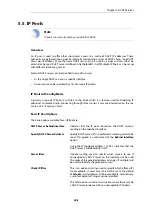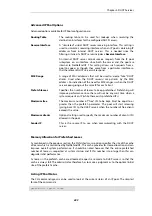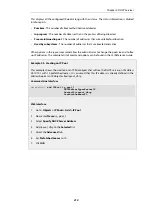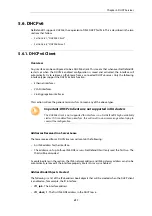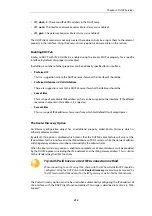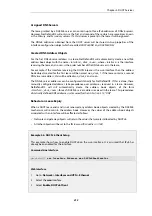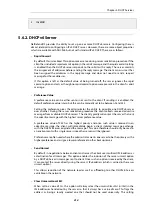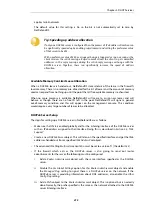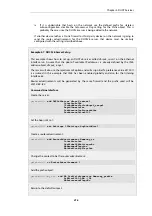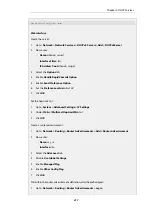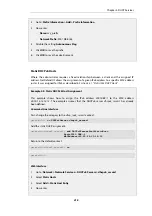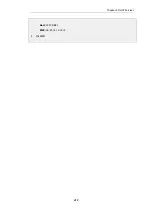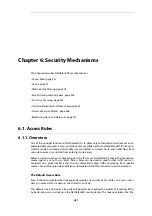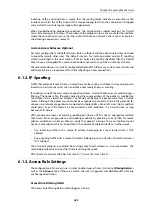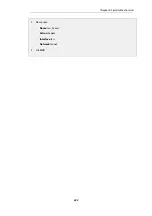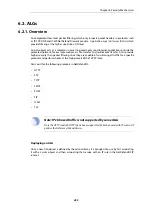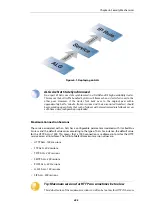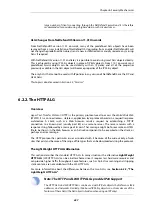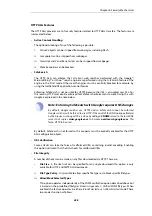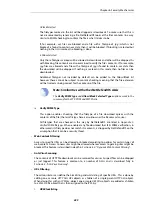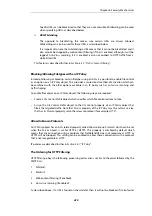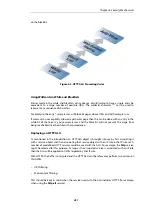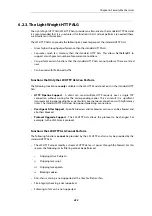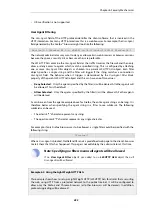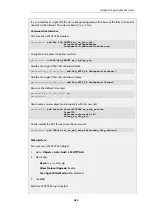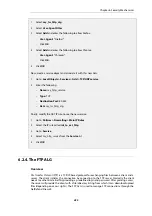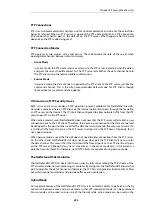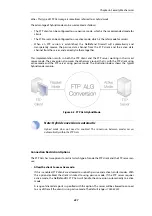
incoming traffic is coming from a source that the routing tables indicate is accessible via the
interface on which the traffic arrived. If this reverse lookup fails then the connection is dropped
and a
Default Access Rule
log message will be generated.
When troubleshooting dropped connections, the administrator should look out for
Default
Access Rule
messages in the logs. The solution to the problem is to create a route for the interface
where the connection arrives so that the route's destination network is the same as or contains
the incoming connection's source IP.
Custom Access Rules are Optional
For most configurations the Default Access Rule is sufficient and the administrator does not need
to explicitly specify other rules. The default rule can, for instance, protect against IP spoofing,
which is described in the next section. If Access Rules are explicitly specified, then the Default
Access Rule is still applied if a new connection does not match any of the custom Access Rules.
The recommendation is to initially configure NetDefendOS without any custom Access Rules and
add them if there is a requirement for stricter checking on new connections.
6.1.2. IP Spoofing
Traffic that pretends it comes from a trusted host can be sent by an attacker to try and get past a
firewall's security mechanisms. Such an attack is commonly known as
Spoofing
.
IP spoofing is one of the most common spoofing attacks. Trusted IP addresses are used to bypass
filtering. The header of an IP packet indicating the source address of the packet is modified by
the attacker to be a local host address. The firewall will believe the packet came from a trusted
source. Although the packet source cannot be responded to correctly, there is the potential for
unnecessary network congestion to be created and potentially a
Denial of Service
(DoS) condition
could occur. Even if the firewall is able to detect a DoS condition, it is hard to trace or stop
because of its nature.
VPNs provide one means of avoiding spoofing but where a VPN is not an appropriate solution
then Access Rules can provide an anti-spoofing capability by providing an extra filter for source
address verification. An Access Rule can verify that packets arriving at a given interface do not
have a source address which is associated with a network of another interface. In other words:
•
Any incoming traffic with a source IP address belonging to a local trusted host is NOT
allowed.
•
Any outgoing traffic with a source IP address belonging to an outside untrusted network is
NOT allowed.
The first point prevents an outsider from using a local host's address as its source address. The
second point prevents any local host from launching the spoof.
DOS attacks are discussed further in
Section 6.7, “Denial-of-Service Attacks”
6.1.3. Access Rule Settings
The configuration of an access rule is similar to other types of rules. It contains Filtering Fields as
well as the Action to take. If there is a match, the rule is triggered, and NetDefendOS will carry
out the specified Action.
Access Rule Filtering Fields
The Access Rule filtering fields used to trigger a rule are:
Chapter 6: Security Mechanisms
422
Summary of Contents for NetDefendOS
Page 30: ...Figure 1 3 Packet Flow Schematic Part III Chapter 1 NetDefendOS Overview 30 ...
Page 32: ...Chapter 1 NetDefendOS Overview 32 ...
Page 144: ...Chapter 2 Management and Maintenance 144 ...
Page 284: ...Chapter 3 Fundamentals 284 ...
Page 392: ...Chapter 4 Routing 392 ...
Page 419: ... Host 2001 DB8 1 MAC 00 90 12 13 14 15 5 Click OK Chapter 5 DHCP Services 419 ...
Page 420: ...Chapter 5 DHCP Services 420 ...
Page 573: ...Chapter 6 Security Mechanisms 573 ...
Page 607: ...Chapter 7 Address Translation 607 ...
Page 666: ...Chapter 8 User Authentication 666 ...
Page 775: ...Chapter 9 VPN 775 ...
Page 819: ...Chapter 10 Traffic Management 819 ...
Page 842: ...Chapter 11 High Availability 842 ...
Page 866: ...Default Enabled Chapter 13 Advanced Settings 866 ...
Page 879: ...Chapter 13 Advanced Settings 879 ...

